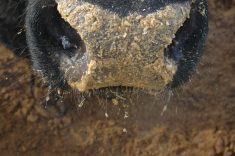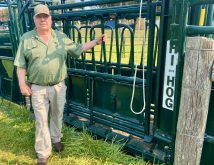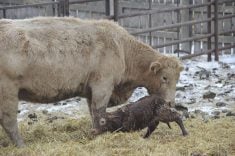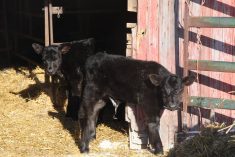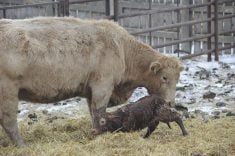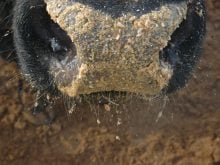Rectal temperature and condition of the ears, tail and feet can help producers decide whether they should take action
Calves born during blizzards or cold weather become immediately chilled, and older calves may also suffer frostbite if they don’t have shelter. Any calf with a body temperature below 38 C needs warming.
Dr. Steve Hendrick of the Coaldale Veterinary Clinic in Coaldale, Alta., says windbreaks and bedding can help prevent frostbite in baby calves but even then, they sometimes get too cold before they can get up and suckle.
“With hypothermia, what you do for them depends on how chilled they are,” he says. Some just need to be in a warm, dry place until they get dry. Others are so cold that they need to be warmed quickly but carefully, since there is already frostbite damage.
Read Also

New coal mine proposal met with old concerns
A smaller version of the previously rejected Grassy Mountain coal mine project in Crowsnest Pass is back on the table, and the Livingstone Landowners Group continues to voice concerns about the environmental risks.
“Calves have a large surface area and less body mass than a cow, and chill faster. Extremities suffer first — ear tips, tail, and sometimes feet,” he says.
Even if the calf isn’t at immediate risk of freezing to death, there is risk of losing ears or tail. If feet are frozen to the point of losing them, the calf will have continual future pain and risk of serious infection and the most humane thing is euthanasia.
To know when to take action, first assess how cold the calf is. Rectal temperature can be a clue, as well as condition of the ears, tail and feet. Frozen ears or tail will be stiff and solid. Check feet for sensation by pinching between the toes to see if the calf reacts. A pinprick above the hoof also reveals whether the calf can feel anything.
If a calf is not severely cold, putting it in a “warm box,” a crate or small pen with a heat lamp, for example, may be enough, especially if colostrum is provided to warm it from the inside and provide energy. If the calf is very cold and with frostbitten extremities, a warm water bath may be better.
In such cases do not use water warmer than body temperature so skin isn’t hurt when already damaged by cold.
“To prevent frozen ears on newborns, some people use ear muffs or fold the ears back against the body. The most important thing, however, is just getting them dry and protecting them from severe wind and cold,” says Hendrick.
Sick calves of any age have a harder time keeping warm.
“In feedlots, we’ve seen cattle in sick pens end up with white hairs on the tips of their ears. Some of the skin cells died in the cold weather. Those cattle didn’t lose their ears, but because they were sick or compromised, circulation to the extremities wasn’t as good. Later on this shows up as white tips or sometimes even losing the tips of the ears,” Hendrick says.
Young calves with scours can readily freeze ears, tails and feet just because they are dehydrated and have poor circulation. The body is shunting the diminished blood supply into the core to keep important organs alive.
“Sometimes people are surprised when an older calf loses ears or tail or feet, but anything that impairs blood circulation puts a calf at risk,” Hendrick says.
A calf with pneumonia or scours that is outside in bad weather is at high risk for hypothermia. A cold, miserable calf doesn’t nurse, exacerbating the problem.
“Wind makes cold weather many times worse,” Hendrick says. “It whips away body heat. In pastures without trees or natural protection, producers often put up panels, wind fence or portable windbreaks.”
Emergency windbreaks can be created with bales or tarps.
Cows need wind protection as much as calves. After a severe storm, cows may lose ear tips, and lactating cows may suffer frostbitten teats. This can make their teats so sore that they won’t let calves nurse.
Producers who calve in January and February are usually set up for it with barns and shelter, but folks who calve later and expect to have good weather are sometimes caught off guard with a severe late storm.
“We’ve seen problems in feedlots that brought in young Holstein calves. If they get a nasty storm, those calves need shelter. They found that putting big bales in circles right in their pens gives the calves a place to get out of the wind. If they have windbreak and good bedding, they are less likely to suffer from cold,” Hendrick says.





